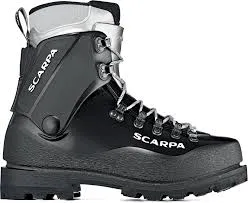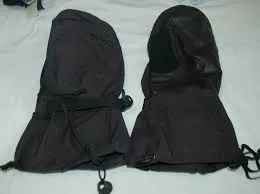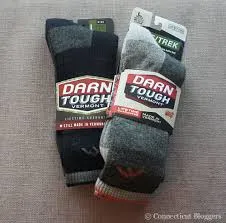
aka Staying Warm!
Keeping your hands and feet dry and warm this winter season
Your feet and hands can be the problem children for many people in the winter, and without those important features of your body it’s hard to function - much less have an enjoyable winter experience. Proper care is important for safe travel and a positive outcome of your adventure, more so than I think many realize. If your feet get cold you may experience minor discomfort and not enjoy your day; or much worse, you could get into an emergency situation and end up losing a digit or two. If your hands get cold, it could have the same adverse effect. However, your hands are much easier to control than your feet when it comes to the cold. I mean, generally you can carry extra gloves, but how many of you out there carry dry boots – socks maybe, but that one just delays more wetness.
Cold injuries
Frostbite is not only a serious physical injury but a life threatening one as well - one that we've all heard of. Frostnip, however, is slightly less dangerous but it is a precursor to frostbite. Frostnip can be seen as a swelling, whitening, reddening and/or chapping of the affected areas. Sometimes frostnip isn’t as noticeable, and left untreated when in the field it can easily advance to full-blown frostbite. Frostnip is not only a current ache, but it can cause you to be more prone to cold weather discomforts and injuries in the future. Fortunately for me, I have never been frostbitten or nipped too badly on my feet; my hands, well, that’s another story. There are a couple of key prevention measures that are very easy to do. Obviously, keep warm - but not too warm, that is the key. Too warm can make you sweat and that turns into moisture that can freeze or get very cold quickly. If you sweat heavily, carry 1-2 pairs of dry socks and gloves and change them before you hit tree line, as soon as you get back to camp, when they get wet, or whenever you feel a discomfort.
Winter Foot Care
Don’t get boots that are too small, or wear too many pairs of socks, that will constrict blood flow in your feet. Compression to the feet, especially in the toes, will cause them to get cold very fast and issues will arise shortly into the trip. No matter the type of footwear you choose, it must fit correctly. Fit is tough over the internet, I recommend you go directly to a local gear shop and try them on to get a professional fit. Once you get the fit down, it is important to get them broken in. The breaking in process takes time and should be done over the course of many smaller trips rather than one long one. Leather mountaineering boots will take much longer to break in and in some cases even longer than the first season. However, mountaineering boots with liners take less time, as the liners pack out faster.

Never wear non-waterproof boots out in the winter. Your summer hiking boots or sneakers are not adequate for a safe day in the woods in the winter. I only say this because I have seen this way too many times in the backcountry.
Other footwear accessories that you might consider are...
Gaiters: Simply a fabric layer to close off the top of the boot. Gaiters come sized from S-XL and in water resistant and waterproof models. With either, the fabric holds in heat while holding back water and snow from getting into your footwear. The barrier that is holding in the heat actually keeps your feet warmer.
Foot and toe warmers: Always carry a few toe warmers with you, just in case. If you use them, place them either under your instep if you have high arches or under your toes in the knuckles. Place them carefully to avoid constriction or rubbing. Your feet are very sensitive to temperature change, it is not recommended to place these directly on the skin.
Winter hand care
Handwear is one of those products that every company in the outdoor industry produces. Some look great but their function isn’t quite up to par - don’t shop for style, shop for fit and function. With hand protection, it’s like the old cliché, “You get what you pay for.” Handwear is relatively light and takes up minimal space, so there is no reason not to carry extra in your pack. Handwear is also the first piece to get wet and while many stay somewhat warm when wet, they soon become uncomfortable and will freeze quickly when removed from the warm layer of your skin.

Gloves and mitts might seem like a very small part of the big picture. I guess, size-wise they are pretty small, but in the scope of the big picture, they can be a very vital part of enjoying a safe winter experience. If you lose the use of your hands and fingers you won’t have the ability to tie your shoes, start a fire, zip up your coat, pick your nose, call for help, and so much more you might take for granted. Protect your hands and they will surely return the favor.
Fit is very important when buying handwear. Like most clothing items, you do not want a tight fit or a loose fit. If the fit is too loose you have extra space that you have to warm up which can create cold spots on really cold days, not to mention the probability they can come off at inopportune times. If the fit is too tight you can cut off circulation to your fingers which will cause your hands to get cold and numb, increasing the chance of cold weather injury. A tight fit also eliminates the opportunity to fit a liner underneath for added comfort and warmth.
Handwear options
The outer glove is the layer that is exposed to the elements. These gloves can be lined, or not, as a shell. Outer gloves are the most important part of your hand protection working as a barrier to the elements.
Glove liners are a must for any winter/cold weather sport enthusiast. I swear by them and recommend them to everyone. Liners are a light, non-waterproof glove that fits under the outer glove against the skin. Liners come in a couple different weights depending on the company you choose; wool liners tend to be much heavier and warmer than synthetic versions. The liner is an important piece for adding warmth to an outer glove that isn’t quite adequate for the conditions. Secondly, it can add a comfort layer to a pair of gloves that might be slightly too big or rough. Also, they can be a stand-alone piece that can be used on warm days or during high activity where getting them wet is less probable or not of a concern. They also work great for taking pictures. When you take off that outer glove to take your shot, you will still have some protection from the elements. That protection will keep your hands from quickly getting cold while you catch the memory on film. These liners are light enough to work a camera and a cell phone, and some liners even come with the ability to use a touch screen on a phone or GPS.

Mitts or shell mitts are something everyone should have a pair of in their pack; if for no other reason than for emergency purposes. Mitts are the warmest handwear out there. With mitts you have the opportunity for your fingers to be closer together, in turn, creating more heat - kind of like a sleeping bag for your fingers. Mitts come in many levels of warmth from light weight to expedition weight; somewhere in the middle is a great place to start. The biggest downfall of mitts is the lack of dexterity. It’s slightly harder to grip a pole and do the minute tasks that fingers are so important for. Shell mitts need a liner to be effective against cold temperatures.
Footwear and handwear one-liners
- Summer hiking boots, even if waterproof might not be adequate protection
- Carry extra laces, just in case
- Mountaineering boots are great winter boots, but are very stiff and often not the most comfortable
- Say NO to cotton

- Wool stays warmer and does not develop an odor over time
- Liner socks and gloves work great and I highly recommend them
- Pack moleskin for blister protection and prevention
- Hand and toe warmers are some of the most important pieces of gear in your pack, even if you don’t use them
- Always carry more than you think you will need
- The more you hydrate and eat the warmer your extremities will be
- Don’t drink alcohol in the back-country, it messes with your body temperature regulators
- Take a wilderness first aid or wilderness first responder course to learn more about cold weather injuries, prevention and treatment in the field
Still have questions about handwear and/or footwear? Contact me here or stop into a local gear shop for answers to your questions. Wish to have an introduction to winter mountaineering, snowshoeing or skiing, find me at a local guide service and we can set it up.
